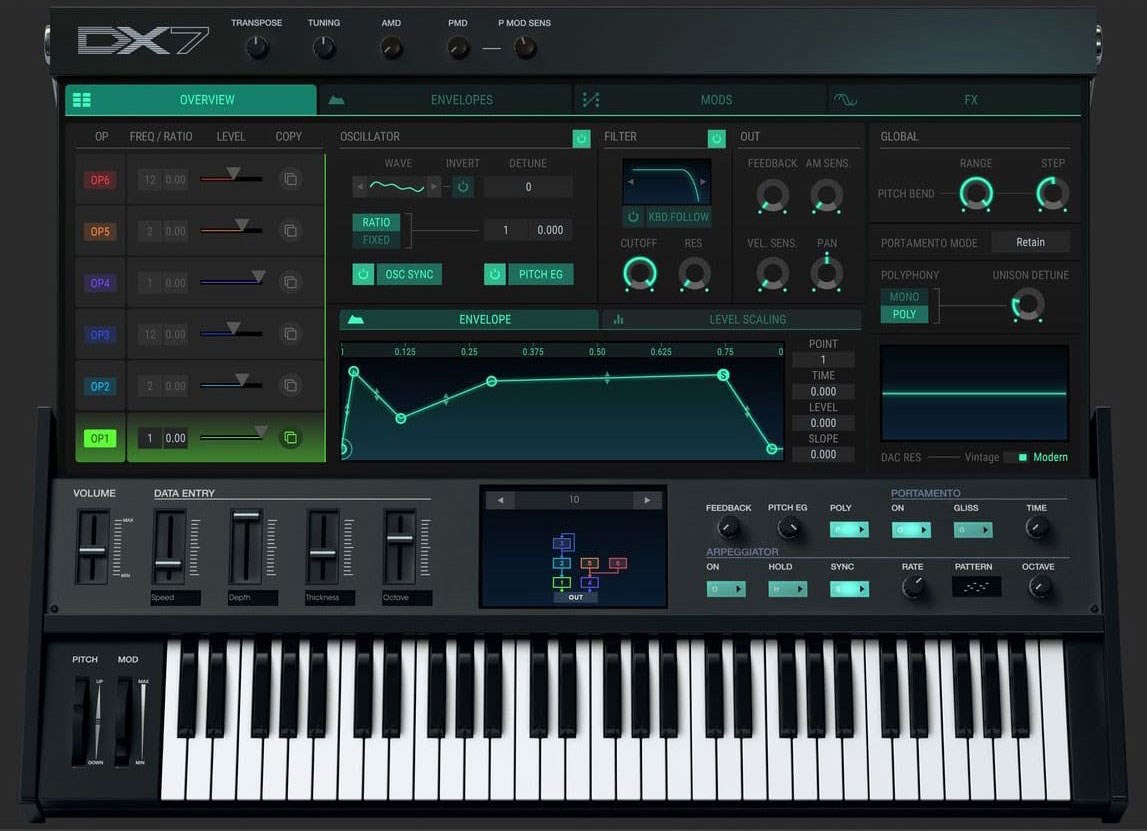

New composition tools: Musician-free compositionĪs well as developing new physical interface models another channel of exploration was to use electronic musical instruments to free the composer from problems associated with performers and performance removing the musician from the process of musical production allowing the composer to create pure unadulterated music concepts.
DX7 PATCHES BERKIN ENO SOFTWARE
More recently interest in atonality and non-manual control has re-surfaced with software synthesis and audio computer languages. and even Moog (in the original instruments) and Buchla’s modular synthesisers. Though this experiment was ultimately doomed due to commercial pressure on instrument designers to provide simulations of existing instruments on a fixed tempered scale for popular music, the concept survived into the 1960s in ‘serious’ experimental music with the era of the Electronic Music Studio GRM, Milan, WDR, Columbia-Princeton Electronic Music Center etc. This lead directly to the design of several new instrument Thadeus Cahill’s Telharmonium (1897) and Jörg Mager’s Sphäraphon (1920s) amongst many other, that explored new forms of interaction freeing the composer and musician from the ‘tyranny’ of the fixed tempered Piano keyboard (which at the beginning of electronic music instrument design was a fairly recent standard). The ideas put forward in Ferruccio Busoni’s ‘Sketch of a New Aesthetic of Music’ (1907) inspired a generation of composers to explore micro-tonal and varied intonation and Hermann von Helmholtz’s ‘On the Sensations of Tone’ (1863) provided an understanding of the physics of sound suggesting the possibility of creating an unlimited palette of tones and shapes beyond the restriction of traditional instrumentation. As well as creating a free, encyclopaedic, pedagogical resource on the History of Electronic Music (and an interesting list for Synthesiser Geeks) my main interest is to expose and explore musical, cultural and political narratives within the historical structure and to analyse the successes and failures of the electronic music ‘project’, for example Modes of interaction for performers and composers: Atonality and just intonation as a theme in instrument design. The focus of this project is in exploring the main themes of electronic instrument design and development previous to 1970 – and therefore isn’t intended as an exhaustive list of recent commercial synthesisers or software packages. Simon Crab – 120 Years of Electronic Music



DX7 PATCHES BERKIN ENO SERIES
Original post with link to the Aphex and Eno DX7+DX9 Patches.įollow up post with link to the more refined MK2 version of these patches.įairlight series samples with loop points for quantum/iridium. User d2ba also posted a set of samples compiled by Tomás Mulcahy, taken from Fairlight series synth's - "Best of Fairlight Series I, II, IIX disk collection" for quantum.includes loop points for quantum/iridium. **Gearsluts user d2ba says "DX7 sysex files import into Quantum/Iridium and will create presets for you with the preset names and almost all of the settings perfectly.Quantum doesn't recreate DX7 pitch envelopes or multiple-operator feedback chains but give these a try, I think they came out great." Therefore for me, its a bit nostalgic to take his patches from an old machine, put them into the new tech and have a fiddle with newer tech additions etc. I never dig for presets but AphexTwin was a hero in my eyes- even tho his music didnt resonate with me completely-he just liked to be weird and to push things to their limits and i thought he was a boss for doing so.ĭuring the late 90's - it was hard to find music without the platforms that exist today so if i wanted avant garde/weird/f*****d up noise, then i went to him. I stumbled across a guy on gearslutz who has taken 139 Yamaha dx7 and dx9 patches made by Aphex Twin and Brian eno and imported/resaved these patches into his quantum.(kernal/operator matrix). Just in case anybody finds this interesting.


 0 kommentar(er)
0 kommentar(er)
